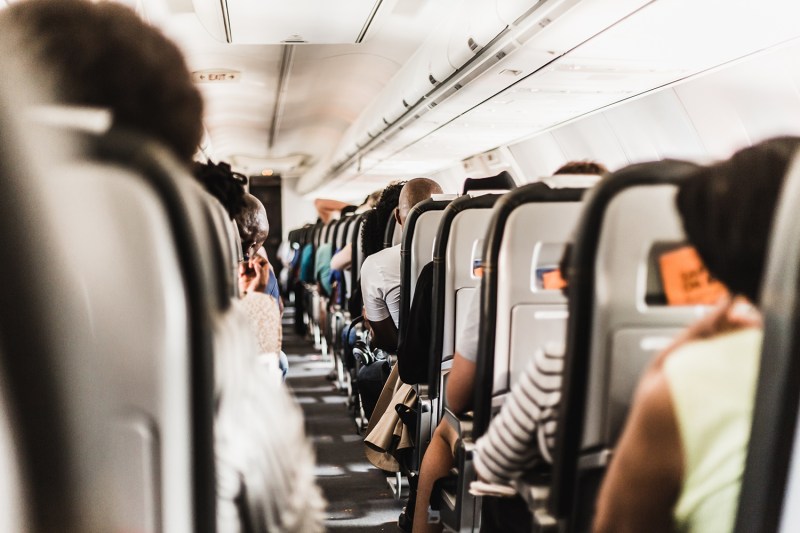Earlier this year, most folks had never heard the term “social distancing” before. Now, we can’t go more than a few hours without talking about it or hearing it on the news. In a few short months, physically distancing from other humans has become the new normal. The coronavirus pandemic has changed the way we live, interact, and even travel for the foreseeable future. Now, it seems that even the way airplane passengers are seated may look very different in the next few years.

For obvious reasons, airplanes are notoriously germy places. Hundreds of people packed into a confined aluminum tube, breathing recycled air for hours makes for a ripe environment for bacteria and viruses to thrive. One forward-thinking avionics design company envisions a revamped cabin with physical barriers separating every passenger.
The first and most straightforward of the two concepts, Glassafe, would adapt most existing seating configurations with minimal changes. Aviointeriors proposes adding hard plastic barriers between seats to physically shield passengers from the shoulder-level up. Theoretically, it would help prevent the spread of viruses and other germs between passengers. The plastic would be transparent to keep the airplane cabin light and airy. An opaque alternative would not only shield passengers but provide a degree of privacy as well.
Janus, Aviointeriors’ second concept, involves a more dramatic reengineering of current cabin layouts. It requires the same hard plastic barriers as the Glassafe concept. However, the aisle and window passengers would face forward, while the middle seat would face the rear of the aircraft. This would, of course, maximize social distancing as much as possible in such a confined space. It would also likely cost the airlines a fortune to implement.
Many airlines are already flying limited routes. In many cases, the planes that are taking off are taking extreme measures to limit passenger interaction. Most domestic carriers, including American, Delta, and United, are requiring passengers to don facemasks before boarding. Some have blocked off the middle seats entirely to maximize social distancing. While these measures probably help, they do little to tackle the biggest problem facing modern air travel: Recycled air. The atmosphere in most airplane cabins is recirculated every six seconds, but only half of it is cut with fresh air. That means the other half of the air passengers are breathing could still be contaminated.
Currently, both designs are only in the concept phase, and no airline has announced official plans for implementation. Aviointeriors has filed patent applications, however, so they’re serious about moving forward. The company says that the Glassafe model could be ready for roll-out in as little as two months, and the Janus concept in just six. However the airline industry chooses to adapt, it seems clear that airplane cabins will likely look very different by as early as next year.


